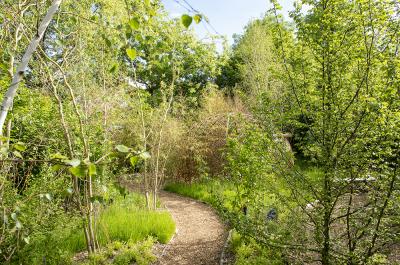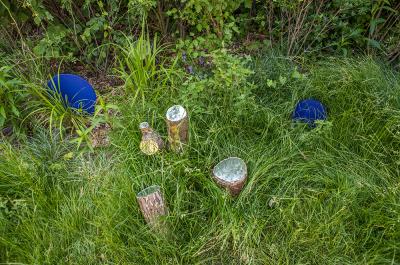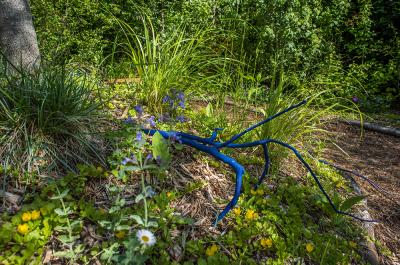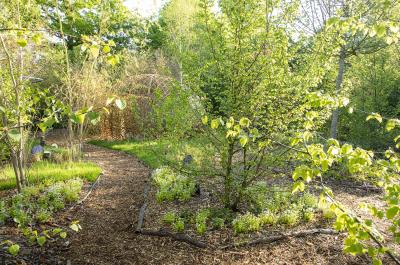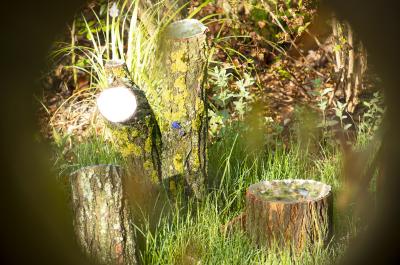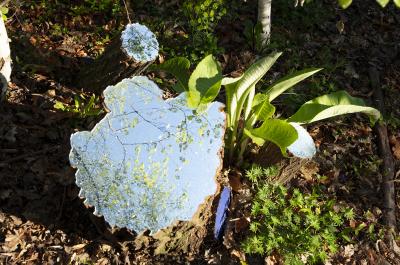03. Ce que l'on voit, ce que l'on sait
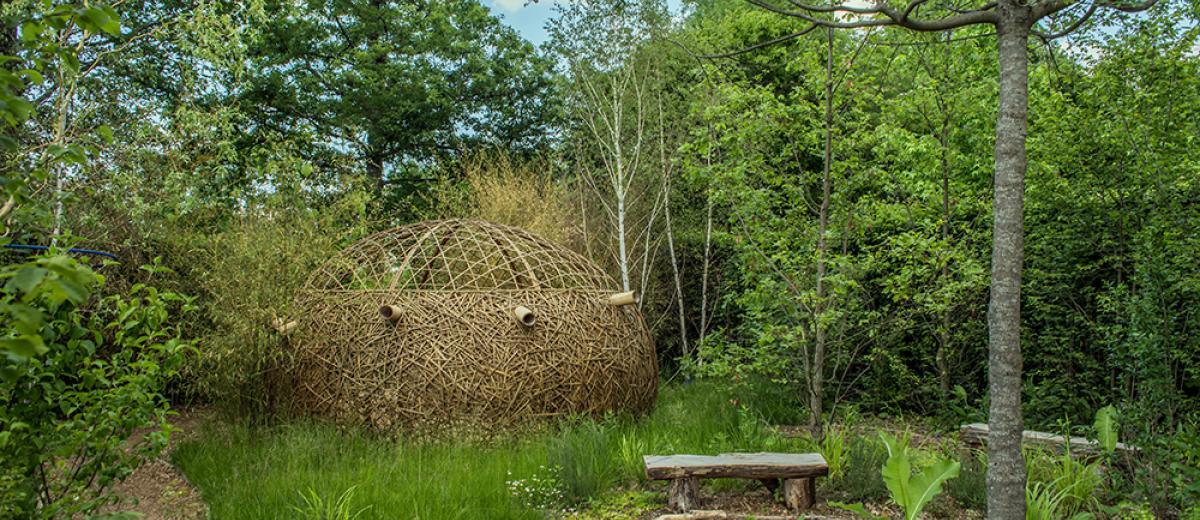
“How do you see this tree?” Is it really green? Use green then, the most beautiful green on your palette. And that shadow? Rather blue? Don’t be afraid to paint it as blue as possible.” Just like Paul Gauguin in Oviri, the writings of a savage, this garden separates what we see from what we know.
oday we know how to analyse, photograph and dissect. But do we really know how to observe? We need to learn how to observe Nature to be able to better understand the biomimicry of the future! These biotopes with their very own means of survival, protection and communication, can also teach us how to help each other and build together, something not usually seen.
Visitors enter the garden through an observatory. There are bamboo sticks used as telescopes. There are some surprises at the end of these long poles: distorting lenses, enlarging lenses, kaleidoscopes, etc. The idea is to connect with one’s own feelings. The observatory teaches us to look beyond the landscape, to something which is usually only barely considered, and when it is, always as a whole. It is about capturing the details of the ordinary plant species all around us. Here and there, touches of colour showcase the roots, leaves, trunks, veins, etc. They are presented in painted anamorphosis, suspended halos or full circles. Pieces of mirror and transparent filters reveal the composition of the soil. That is how we learn to appreciate the unseen, its workings and its secrets.
DESIGNERS

The idea for the Atelier Déambulons first came about in Asia and then was brought to life in Lyon. Jean-Baptiste Dubois has always been passionate about design, architecture and Land Art, and between 2003 and 2006, he found himself helping to build a school in a village populated by the Karen people in Thailand. Over there, bamboo is used both as a tool for working and a building material. He discovered the strength and flexibility of bamboo and found this both intriguing and fascinating. A few years later, he created the Atelier Déambulons.
Anne-Sophie Gouyen studied architecture and won first prize for the 'Situation(s)' field. She wanted to help in the creation of new, more eco-friendly practices and began looking into bioclimatic design and building techniques using natural materials such as wood, earth, straw and... bamboo. She discovered this material while she was volunteering in Cambodia with the NGO Raw Impact, and she decided to focus on bamboo for her Master’s thesis, to then work with this material later on with Atelier Déambulons.
Sybille du Peloux trained at the Ecole Supérieur d’Art et de Design in Reims and at the Ecole des Beaux-Arts in Lyon. She experiments with all the fields involved in being a designer. She has worked as a brand strategist for Dragon Rouge, an interior designer and a graphics designer, and she has always managed to stand out thanks to her curiosity and thirst for finding something new. She had been working as a freelance artistic director for LE PACK since its creation and has now decided to join the team permanently in order to get more involved and strengthen the DNA of this small business, as well as to showcase her talent and pass on her values, knowledge and skills.
Antoine du Peloux was attracted to the arts from a very early age (with drawing, music and then writing), and he also explored his scientific side by studying engineering. However, it was the call of the wild that would really drive his career. After exploring the winegrowing and forestry industries, he turned to landscaping, a 'sector that combined all his passions'. After obtaining a qualification in landscaping, he joined the founder of Mauvaises Graines and proceeded to create and develop the brand’s design office. He has designed some prestigious and creative events at the Grand Palais, the Merci store and at the Palais of Tokyo. In 2015, he created LE PACK, a multi-faceted small business with a landscaper, artisan, designer, agricultural engineer and a winegrower. These five ambassadors for nature are passionate about the environment and, as a team, have been awarded several prizes at the Jardins-Jardin exhibition (2015, 2016 and 2018). LE PACK takes inspiration from today’s trends, combining their expert knowledge, visions, dreams and techniques to create innovative ideas for landscaping, with a touch of elegance and lyricism.
Louise Rué has been a self-employed designer of objects and furniture since 2017 and is based in Orléans. Her projects are often linked to plant-life and, through them, she shares and passes on her values for an eco-friendly way of life, promoting reuse. Through design, she portrays the emerging issues of today, creating harmony with shapes, materials and uses. Her work varies between designing and creating pre-project ideas and conceptual ideas, from sketches to 3D creations, for artisans, landscapers and media professionals (Atelier Déambulons, Garden_Lab, etc.), designing furniture and objects for publishing houses and small ethical and responsible brands (Boutures d’Objets, Axonge, etc.), responding to invitations to tender either alone or as a team, writing research articles on the subjects of design and alternative farming that led to her Master’s thesis "Cultivez la Terre, les logiques du design dans les petites exploitations agricoles alternatives” (Cultivate the Land, the notion of design on small alternative farms).

